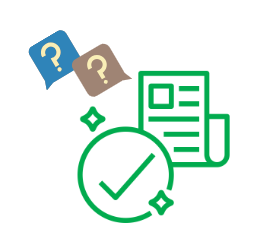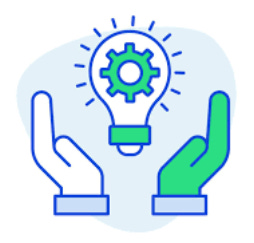Week 28/31: Behavioural Interview Questions for Data Engineers
How to prepare, structure answers, and impress interviewers with real word examples.
So far in our data engineering interview preparation series1, we’ve focused heavily on the technical skills that are essential for data engineering and similar roles:
This week, we’re shifting focus to an equally important, but often overlooked, area: behavioural interview questions.
From our experience, behavioural questions can show up at any stage of the interview process, from an initial phone screen to later rounds or sometimes not at all. But when they do, they can make a big difference.
Why? Because they aren’t designed to test our technical abilities only. Instead, they assess areas like:
Motivation and initiative
Communication and collaboration
Problem-solving and adaptability
Ownership, proactivity and growth mindset
In other words, they reveal how we work with people and handle challenges, not just how well we write SQL or design pipelines.
Remember: Every interview question is a chance to showcase our strengths, demonstrate our influence, and prove that we’re more than just technically competent.
Therefore, the more we organise our thoughts and practice our answers ahead of time, the more confidently we’ll be able to share the right stories at the right moments.
In this post, we’ll share what we’ve learned through both experience and research, including:
How to give strong, clear answers in interviews?
3 Rules for better tailoring our responses to the job description.
What are behavioural questions?
How to prepare for behavioural questions using:
SRAR method
6-step process with a real practical example.
Sample behavioural questions from tech companies like Amazon, Netflix, Airbnb and many more.
While I’ll include data engineering-specific examples, the lessons here are universal and can benefit anyone preparing for interviews.
🎉We’re excited to announce that Yordan Ivanov , Head of Data Engineering at Dext, with 15 years in software and 8 years building modern data platforms, will join us to share his valuable insights on data engineering interviews.🎉
He has conducted hundreds of interviews with software, data, and analytics engineers and we beleive his experince would be really valuable for us.
Have questions for Yordan? Please leave them in the comments, and we’ll ask on your behalf. Stay tuned, his insights will be published in the coming weeks.
Want to learn more from Yordan? Check out his Substack2 and connect with him on LinkedIn3.
How To Give Strong, Clear Answers In Interviews?
Before we delve into behavioural questions and how to address them, its important to step back and understand what makes a strong interview answer in the first place?
1. Detailed and specific
Strong answers use numbers, statistics, and concrete examples to back up our story. They avoid unclear statements like:
“I’m a hard worker, so I’m sure I’d do well in this job.”
Instead, they provide evidence, measurable results or specific actions that prove our point.
2. Direct and clear
Interviewers value clarity. A great answer:
Addresses the exact question asked.
Stays on-topic without drifting into irrelevant details.
Delivers just enough context to be convincing, without overexplaining.
Bad example
"Well, in my previous role, we had a lot of projects going on, and sometimes priorities were shifting. Once, a data pipeline broke, and it was challenging because multiple stakeholders were involved, and we had to determine how to resolve the issue. I talked to some people, and eventually, we found a solution, but it took a while because there were different opinions about the best approach."
Good example
"In my last role, one of our critical ETL pipelines failed just before a reporting deadline. I quickly diagnosed the issue, identified that a schema change caused the failure, and updated the pipeline to handle the new format. I also tracked the problem to implement quality checks after that. As a result, we restored the pipeline within two hours, and the reporting team delivered on time. I also implemented the quality checks to prevent these kinds of issues”.
3. Results-oriented
Rather than focusing on what we could do, great answers highlight what we’ve already accomplished. Past achievements are the best predictor of future success, so prepare real success stories that align closely with the role we’re applying for.
Bad example (future-focused):
"I’m confident I could improve your data pipeline because I’m a hard worker and I always try to make processes more efficient."
Good example (past achievement with measurable outcome):
"In my previous role, I optimised a nightly ETL job that was taking over 8 hours to run. By redesigning the workflow and adding partitioning, I reduced the runtime to just under 2 hours. This freed up server resources and allowed the analytics team to access fresh data earlier in the day; improving their reporting accuracy."
4. Tailored to the company
Most candidates focus on themselves, but the best candidates make it about the employer. Show we understand:
Their challenges and goals.
How do we solve their problems?
How can we help them make or save money?
Our examples should clearly connect our past experience to their future needs.
Bad example (self-focused):
"I’ve worked on a lot of data modelling projects in the past, and I’m confident I can apply those skills here. I really enjoy creating data models and always keep up with the latest techniques."
Good example (employer-focused):
"From your job description, I see you’re working on building a unified customer data platform. In my last role, I redesigned the product sales model to align 12 different source systems into a single star schema. This reduced query times by 60% and gave the marketing team a trusted single source of truth for campaign performance. I’d love to bring that experience here to help your team build scalable, analytics-ready models that drive faster insights and more accurate reporting."
3 Rules for Tailoring Our Responses to the Job Description
In interviews, “tailoring” means customising our answers to fit the specific company, team, and role we’re applying for
Is it really necessary?
Absolutely. We’re competing with other candidates; tailoring can be the factor that wins us the offer and potentially a better role.
Here’s the three-step method we recommend for perfect tailoring:






